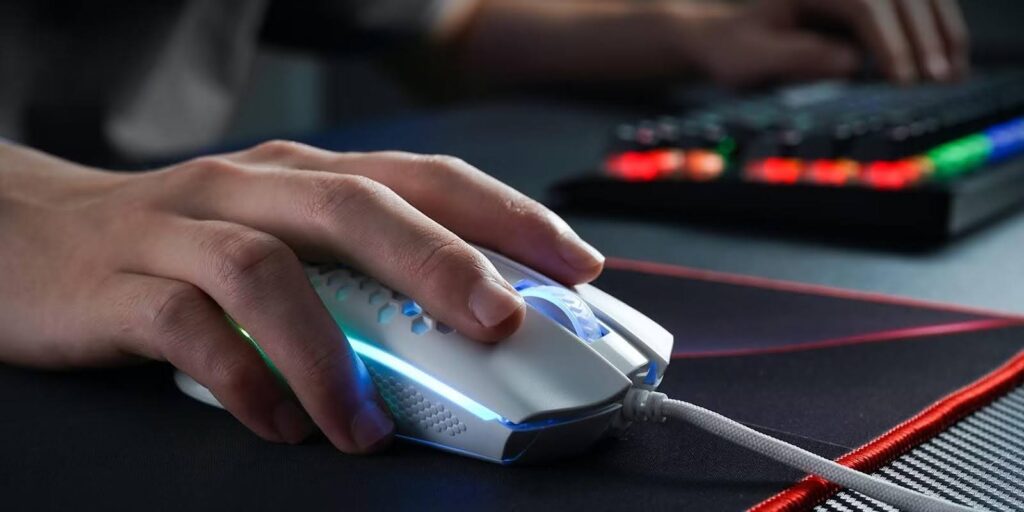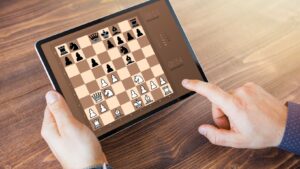
In competitive gaming, consistent aim is crucial for performance. Players often switch between titles like Counter-Strike 2 (CS2), Valorant, Apex Legends, and Call of Duty, but differences in game sensitivity settings can disrupt accuracy and muscle memory. That’s where tools like Aimlabs Sens Converter come into play—helping players retain their skills while switching games. These tools have become indispensable for professionals and casual players alike, ensuring that their training doesn’t go to waste when transitioning between platforms. With a proper sensitivity match, players can pick up a new game and perform at a high level almost instantly, minimizing the adaptation period.
Whether you’re a professional player or a dedicated enthusiast, understanding how to correctly convert sensitivity between games is essential. In this guide, we explain how Aimlabs Sens Converter works, how to apply it, and what to watch out for to ensure your aim stays sharp. Mastering these mechanics can lead to faster adaptation, better match performance, and more enjoyable gaming experiences across multiple titles. Additionally, accurate sensitivity can build confidence in your reflexes, decision-making, and overall game sense.
Understanding How Sensitivity Works in FPS Games
Each FPS game calculates mouse sensitivity differently, depending on variables like field of view (FOV), aspect ratio, and internal game scaling. For example, a sensitivity of 2.0 in CS2 doesn’t feel the same in Valorant, even if your DPI (dots per inch) setting remains unchanged. This discrepancy stems from how different game engines interpret mouse input and movement, which often leads to confusion among players. These small differences may seem minor but can significantly affect muscle memory and flick consistency.
This variation makes it challenging for players to keep their aim consistent across games. That’s why converting sensitivity correctly is so important. Tools like Aimlabs Sens Converter use mathematical models to help you find the matching sensitivity value across different platforms and engines. With accurate conversion, players can maintain their muscle memory, which is critical during intense gameplay moments, especially in high-stakes tournaments. This process not only saves time but also provides a psychological edge, knowing that your settings are optimized for performance.
Additionally, many professional players who are ranked high in the cs ranking charts rely on consistent sensitivity settings to maintain their performance when switching between tournaments and training environments. A single misalignment in sensitivity can result in split-second delays that mean the difference between winning and losing in elite competitive scenarios. Their continued success under varying conditions is proof of how vital this consistency is to professional play.
How to Use Aimlabs Sens Converter
Aimlabs Sens Converter is a free and easy-to-use online tool that takes your existing sensitivity from one game and calculates the equivalent for another. Here’s a step-by-step guide: using this converter simplifies a task that would otherwise require complex manual calculations and guesswork, saving time and preventing errors. It also provides peace of mind, knowing that your aim settings have been accurately transferred between different game engines.
- Visit the Sens Converter page on Aimlabs’ website or through the desktop app.
- Select your original game (e.g., CS2) and enter your current sensitivity and DPI.
- Select your target game (e.g., Valorant) to which you want to convert.
- The tool automatically calculates the equivalent sensitivity.
- Apply the new value manually in the game settings or export the configuration, if supported.
Remember to double-check your DPI remains the same across both games for the conversion to be accurate. A mismatch in DPI values will invalidate the results, leading to inconsistent aiming behavior that could hinder your gameplay. It’s also a good idea to save your original settings somewhere in case you need to revert or fine-tune them later.
Common Mistakes to Avoid When Converting Sensitivity
While Aimlabs Sens Converter is a precise tool, errors can still occur if not used correctly. Here are the most common mistakes: recognizing these mistakes ahead of time can save players from hours of frustrating adjustments and degraded performance in-game. Proper preparation and awareness can make the difference between flawless aim and constant readjustment.
- Changing DPI without updating the tool: The converter assumes your DPI remains consistent. If you change it, results will be off. Always ensure your hardware settings match what’s input into the converter. Forgetting to do so is one of the most frequent errors users make, leading to unreliable results.
- Not accounting for FOV: Games with different fields of view can make similar sensitivities feel different. Always consider the FOV settings. It’s best to align the FOV between games whenever possible to create a consistent visual experience. Some games even allow for custom FOV, so take advantage of this to replicate your preferred feel.
- Relying solely on numbers: Converted values are a starting point. In-game testing and personal comfort are also essential. No two players have the same feel for sensitivity, so personal adjustments may still be needed after conversion. Be prepared to fine-tune settings to match your unique aiming style and monitor setup.
To get the best results, use the converter, then test the new sensitivity in Aimlabs training tasks or a shooting range before jumping into competitive matches. This calibration phase can help fine-tune your aim and build confidence in your new setup. Training in a controlled environment helps eliminate uncertainty and reinforces precision.
Benefits of Using Aimlabs for Sensitivity Training
Aimlabs isn’t just a conversion tool—it’s also a powerful aim training platform. Once you’ve adjusted your sensitivity, you can use Aimlabs to: maintain sharp reflexes and precision through customizable routines tailored to your gameplay style and target game. It acts as a bridge between raw conversion and real-world performance, allowing users to seamlessly adapt.
- Practice aim tracking, flicks, and reaction time with customizable drills
- Simulate different game environments
- Analyze your performance with heatmaps and stats
- Create routines tailored to specific games or hybrid settings
The integration of training and conversion tools provides a complete solution for aim consistency, helping you continuously refine your skills across a variety of games. Using Aimlabs daily can contribute to measurable improvements in aim control, especially when switching game genres or devices. It also helps in building muscle memory faster and recovering aim after breaks.
Conclusion
Sensitivity conversion is a critical step for any gamer looking to perform well across multiple FPS titles. The Aimlabs Sens Converter is an indispensable tool that simplifies the process and helps you maintain your precision and muscle memory. It’s designed not just for accuracy, but for practical ease of use, making it accessible to players of all levels. From casual gamers to professionals, everyone can benefit from its functionality.
When used correctly—alongside proper training routines and awareness of common mistakes—it can significantly boost your gameplay. Tools like Aimlabs allow you to focus on strategy and reflexes, rather than worrying about inconsistent aim mechanics. The less time spent troubleshooting sensitivity, the more time available for tactical development.
By understanding how in-game sensitivity, DPI, and FOV interact, and by using Aimlabs not just for conversion but also for training, players can elevate their skills across the board. For anyone serious about performance in games like CS2, Valorant, or Apex, this tool is a must-have in your arsenal. Whether you’re climbing the cs ranking or simply trying to improve your accuracy, Aimlabs Sens Converter can provide a major competitive edge. It not only preserves your hard-earned muscle memory but also empowers you to perform at your peak across any title.













